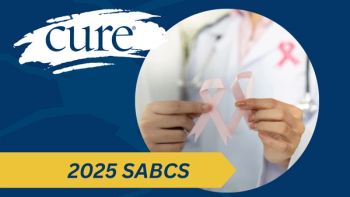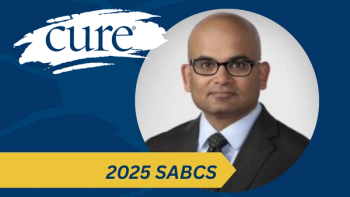
- Hematology Special Issue (October) 2021
- Volume 1
- Issue 1
Paying It Forward for Other Patients With Multiple Myeloma
After receiving a diagnosis of multiple myeloma, a patient relied on the Multiple Myeloma Research Foundation for information and is becoming part of the conversation.
In 2010, Kerry Tracy ran a half-marathon for his daughter’s best friend’s mom. She had just received a diagnosis of multiple myeloma and, knowing he was an avid runner, she asked him to participate.
“You do obviously learn about (the disease) and see what it’s all about,” he said of the time spent leading up to the event.
Two years later, after going to the doctor for back pain, he, too, received a diagnosis of multiple myeloma.
“As my oncologist said, ‘This is not your garden-variety multiple myeloma,’” explained Tracy, who lives in New York City. “I had multiple compression fractures throughout my vertebrae and needed three kyphoplasty surgeries immediately.” Kyphoplasty is a minimally invasive surgery used to treat vertebral compression fractures by inflating a balloon to restore bone height. Bone cement is then injected into the vertebrae.
“It was kind of a shock. I was in pretty good shape and never really had any medical issues,” said Tracy, who was 52 when he received his diagnosis. The then-CEO of Working Media Group was used to working out six days a week, skiing, coaching and playing golf with his children — two were in high school and one was in elementary school — and wife.
One of the first things Tracy did after receiving his diagnosis was reach out to experts at centers well known for treating multiple myeloma, including Memorial Sloan Kettering Cancer Center, NewYork-Presbyterian Hospital, Mount Sinai Health System, The University of Texas MD Anderson Cancer Center and Dana-Farber Cancer Institute. All told him the same thing: If you’re going to do your research, do it on legitimate websites.
“MMRF (Multiple Myeloma Research Foundation) was one of the places that I looked at and kind of relied on,” he explained, noting that foundation staff members helped connect him with doctors. “I’ve been really thankful for what they’ve done.”
Tracy said that the MMRF helped him zero in on the most accurate information. “I subscribe to Google alerts on everything and anything about myeloma, and there’s a lot of information out there that you see that’s credible, and there’s some information out there that’s not,” he said.
This realization, combined with his positive experience with the MMRF, led Tracy to start his company, Digitent, nine years after receiving his diagnosis.
Through his company, he is striving to produce accurate health and wellness multimedia content.
“It goes back to what the doctors told me when I was diagnosed,” he explained. “(They) ... gave me three sites to try to stick to because when you first get diagnosed, you’re looking up everything. You want to be as well-informed as possible, and some- times it’s pretty scary in terms of the stuff that you read. ... There’s no police out there saying what you can (and) can’t post.”
One of his upcoming series includes a podcast with doctors and patients who have orphan diseases (diseases that affect less than 200,000 people worldwide) such as multiple myeloma, providing a space for those patients and experts to learn and connect.
“Every time I had a (stem cell or bone marrow) transplant, the thing that ... I always wanted to see was who had it done before me, and what was their experience? I think podcasts are a great way to tell your story and hear other people’s stories,” he concluded.
For more news on cancer updates, research and education, don’t forget to
Articles in this issue
about 4 years ago
New Treatments and Tips for Dealing With Blood Cancerabout 4 years ago
Becoming an Informed Patient With Rare Cancerabout 4 years ago
Better Days Ahead for Patients With AMLabout 4 years ago
The Future of Cancer Looks Bright With Engineered Cellsabout 4 years ago
‘Promising Times’ for Patients With CLLabout 4 years ago
A New Line of Defense in Blood Cancer: Natural Killer Cell Therapy



